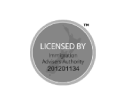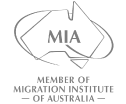In the world of strategic investment and global mobility, certain events become defining case studies. The 2011 granting of New Zealand citizenship to tech billionaire Peter Thiel is one such case. The story, which erupted into the public consciousness years later, was dominated by a single, sensational detail: that Thiel had spent just 12 days in the country before becoming a citizen.
For the casual observer, it was a story of a billionaire “buying” a passport. But for the sophisticated global investor—the family office principal, the established entrepreneur, the strategist seeking a stable harbor in an uncertain world—the Thiel saga is far more than a tabloid headline. It is a crucial lesson in the evolution of investment migration.
This affair was the catalyst that forced New Zealand to fundamentally rethink its value proposition to high-net-worth individuals. It triggered the eventual dismantling of an opaque, ad-hoc system and replaced it with what exists today: one of the world’s most modern, flexible, and strategically compelling investor visas. Understanding the Thiel controversy is to understand why the current program is so intelligently designed for people exactly like you.
The Thiel Case: The Facts vs. The Fury
To grasp the strategic lessons, we must first cut through the noise and examine the mechanics of what actually occurred. The public outrage was significant, but the process, while controversial, operated within the legal framework of the time.
The “12 Days” Controversy
The core of the public’s frustration stemmed from the revelation that Thiel had spent a mere 12 days in New Zealand before his citizenship was approved. This information, revealed in documents obtained by The New Zealand Herald, seemed to make a mockery of the standard residency requirements, which typically demand an applicant spend the majority of their time over several years physically in the country.
For global strategists whose lives and business obligations are spread across continents, this detail is a double-edged sword. While the outcome (flexibility) is desirable, the public perception of “special treatment” is not. The controversy highlighted a major flaw in the old system: it relied on subjective exceptions rather than clear, predictable rules.
The “Exceptional Circumstances” Clause
Thiel’s application did not follow the standard path. Instead, it was granted by the Minister of Internal Affairs under a rarely used “exceptional circumstances” clause. The argument, as outlined in official papers, was that Thiel’s entrepreneurial track record and his value to New Zealand were so significant that it was in the country’s interest to waive the normal residency requirements.
His citizenship application was championed by prominent figures in the New Zealand tech and business community, who saw his involvement as a powerful endorsement of the country’s burgeoning innovation sector.
The Tangible Investments
This was not a passive transaction. Thiel had already made substantive contributions to the New Zealand economy. His venture capital fund, Valar Ventures, made its first New Zealand investment in 2010. His most high-profile investment was a significant, early-stage stake in the accounting software company Xero, which has since become one of New Zealand’s greatest global tech success stories.
The argument was made that his capital was not just present, but productive. He also purchased a substantial property in Queenstown, signaling a long-term commitment. However, to the public, these facts were overshadowed by the perception that the rules had been bent for a globally influential figure.
The Real Cost: A System Under Scrutiny and the Birth of a New Strategy
The “cost to the nation” wasn’t a financial loss; it was a crisis of confidence. The Thiel affair created a widespread belief that New Zealand’s investment migration pathway was a “black box”—a system where outcomes depended less on clear criteria and more on who you knew.
This backlash was the critical turning point. It forced policymakers to confront the very pain points that deter discerning global investors:
- Opacity and Complexity: The old system was a confusing mix of different categories with arbitrary rules.
- Burdensome Requirements: For those not granted “exceptional” status, the time commitments were impractical for active business leaders.
- Perceived Lack of Value: Questions were raised about whether New Zealand was extracting enough tangible benefit in exchange for the priceless asset of citizenship.
In response, New Zealand didn’t just tweak the rules; it went back to the drawing board and engineered a new program from the ground up: the Active Investor Plus visa.
The Evolution: How New Zealand Solved the Investor’s Dilemma
The Active Investor Plus visa is the direct, intelligent answer to the problems revealed by the Thiel case. It replaces subjectivity with clarity and is purpose-built for the established, globally mobile investor who seeks a true partnership with a country, not just a passive residency permit.
Here’s how it addresses the primary frustrations of the Global Strategist:
1. Solving the Physical Presence Puzzle
The program acknowledges the reality of a global career. Instead of an ambiguous waiver or a rigid annual requirement, it sets a clear and remarkably flexible target. An investor needs to spend just 117 days in New Zealand over a four-year period. This can be fulfilled at any point during the four years, providing unparalleled flexibility to manage international business and family commitments. This structure is a decisive advantage over programs like Australia’s, which often demand a more rigid, annual presence.
2. Replacing “Insulting” Hurdles with Pure Merit
The new system recognizes that a significant capital commitment and a track record of success are qualifications in themselves. It has removed the arbitrary barriers that frustrate many established investors. Under the Active Investor Plus visa, there are no upper age limits, no English language tests, and no specific business experience requirements. The focus is squarely on the quality of the investor and their capital.
3. From Ambiguity to Strategic Clarity: A Tiered Investment Framework
Perhaps the most brilliant innovation is the clear, weighted investment framework. This replaces the old, confusing system with a structure that directly aligns with the risk profile of a wealth-preservation-focused strategist. The program requires a NZ$15 million investment, weighted to incentivize growth-oriented assets.
- The “Balanced” On-Ramp: You can place up to NZ$7.5 million in familiar, lower-risk listed equities and up to NZ$7.5 million in philanthropy. This provides a stable, transparent entry point into the market, satisfying the need for capital preservation.
- The “Growth” Multiplier: The real genius lies in the weighting. Direct investments into private companies are given a 3x weighting, and investments into managed private equity or venture capital funds receive a 2x weighting. This means a direct investment of NZ$5 million fulfills the entire NZ$15 million requirement.
This structure allows you to enter the market comfortably, then strategically pivot towards higher-impact opportunities over time as you build local knowledge and networks, all while being rewarded for doing so.
The Ultimate Prize: Two World-Class Countries, One Strategic Move
The Thiel case may have changed the front door to New Zealand, but it didn’t change the ultimate prize waiting on the other side. After fulfilling the clear requirements of the Active Investor Plus visa and holding residency, the pathway to New Zealand citizenship becomes available.
And this is where the final strategic piece falls into place. Under the long-standing Trans-Tasman Travel Arrangement, a New Zealand citizen has the de facto right to live and work in Australia.
This transforms the investment from a single-country solution into a powerful regional anchor. It provides your family and your capital with access to two stable, secure, and prosperous English-speaking democracies—a “two for one” strategic advantage that no other investment migration program in the world can offer.
The Peter Thiel saga was a moment of reckoning for New Zealand. But out of that public firestorm, a superior instrument was forged. For the Global Strategist today, the lesson is clear: New Zealand learned from its mistakes and has designed a system not for those seeking loopholes, but for those seeking a true and transparent strategic partnership.










